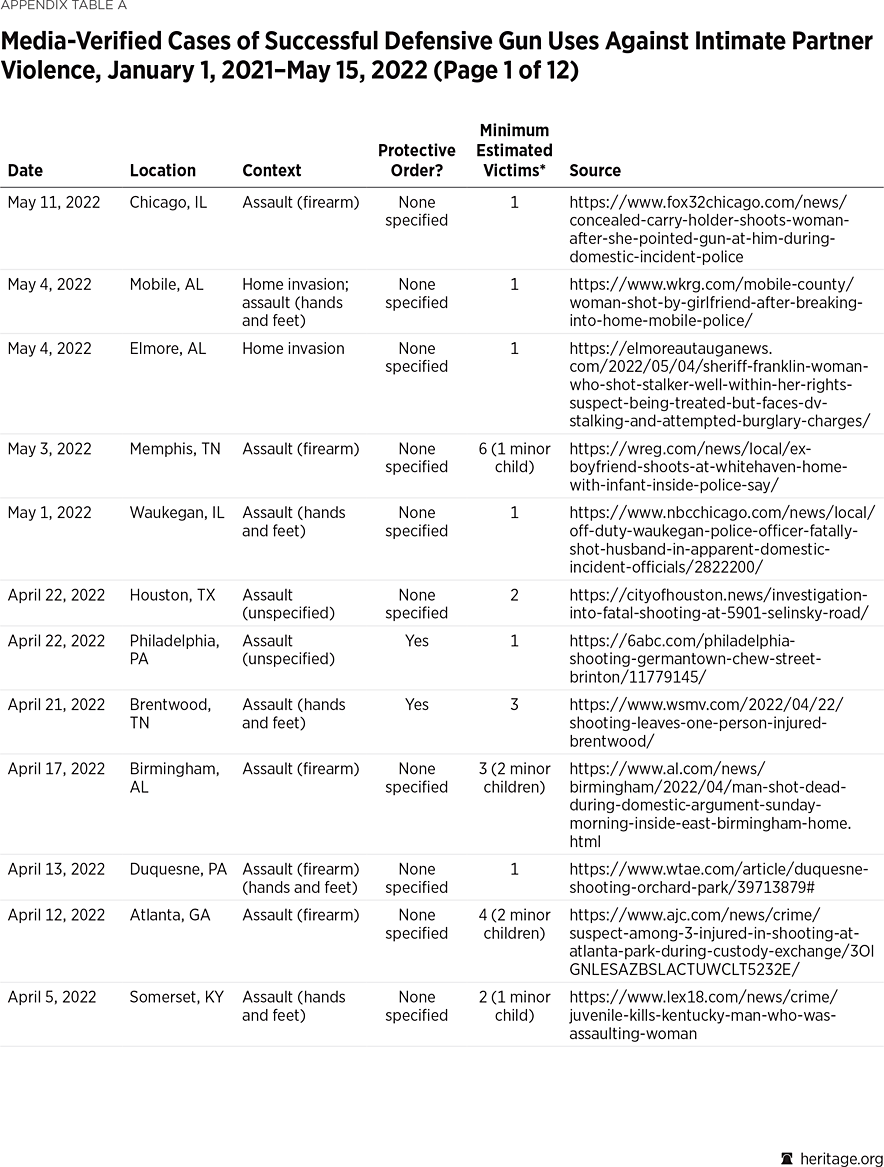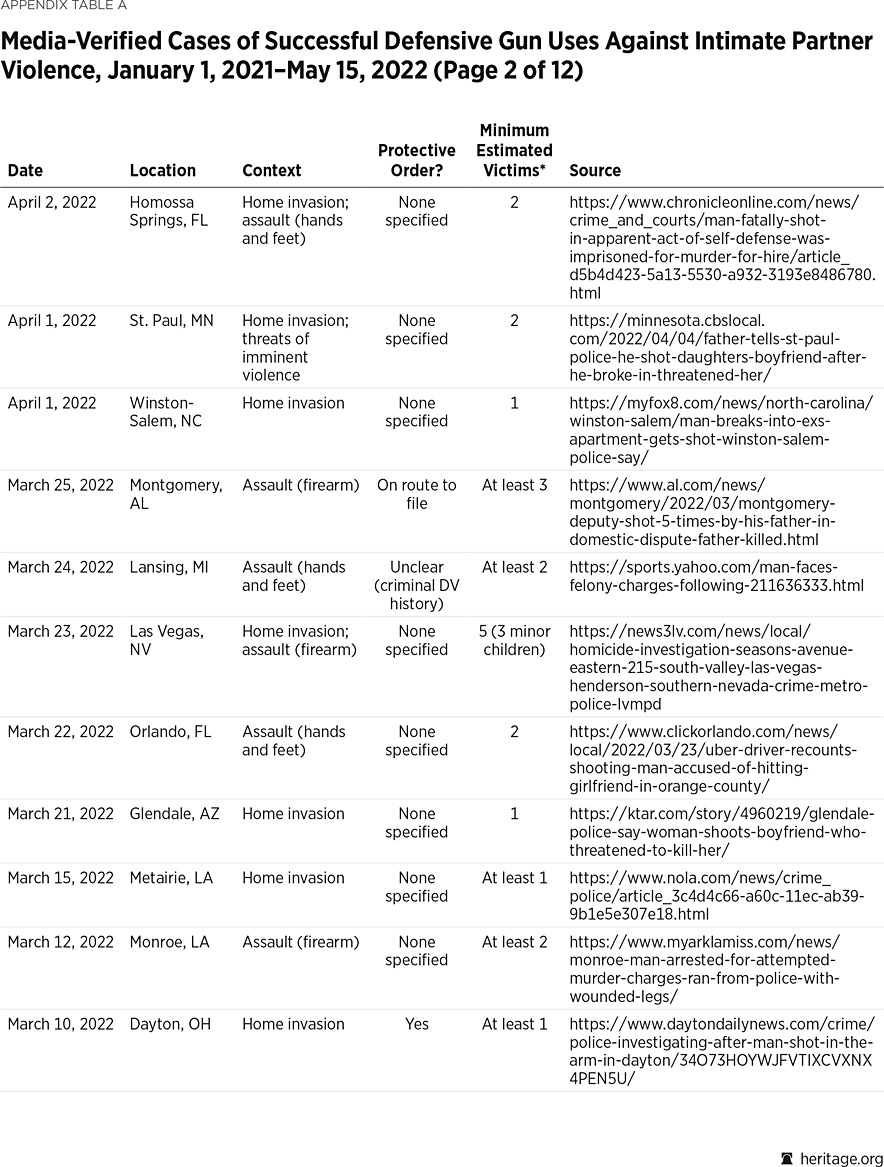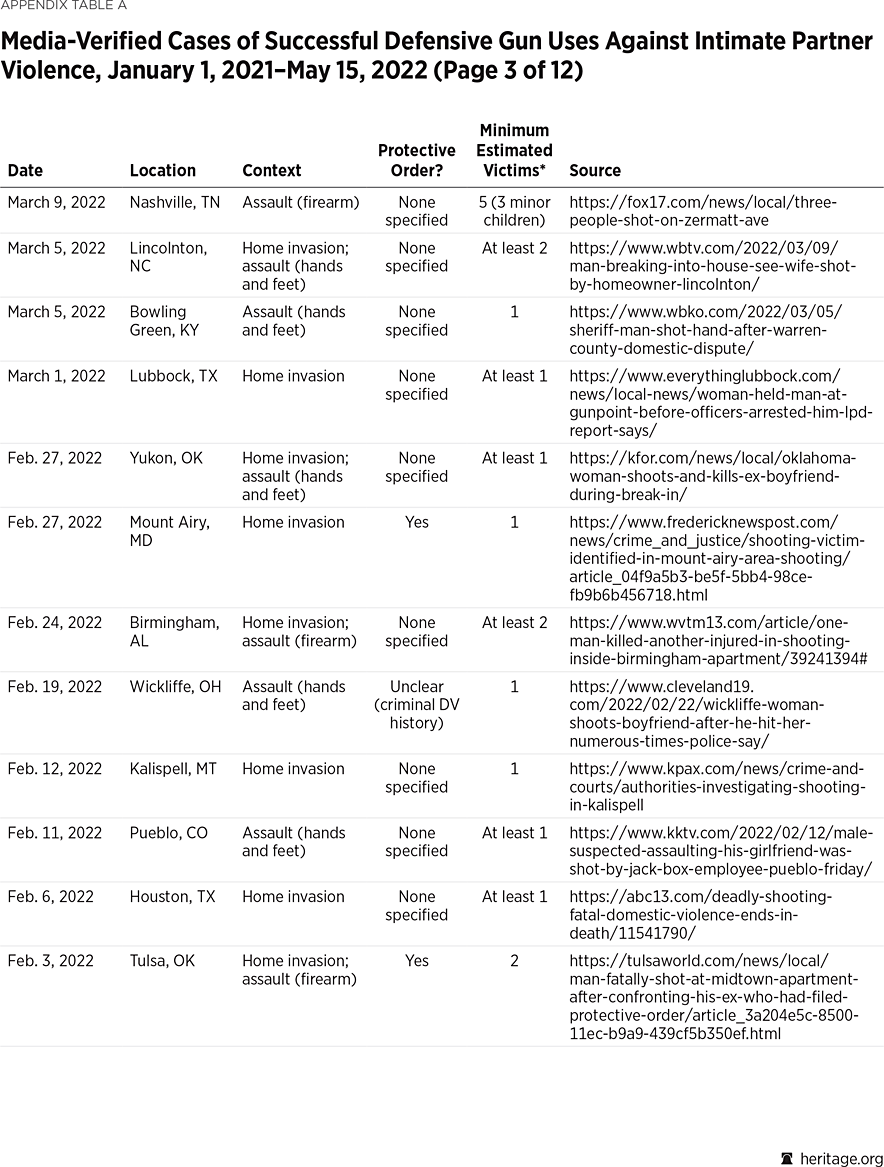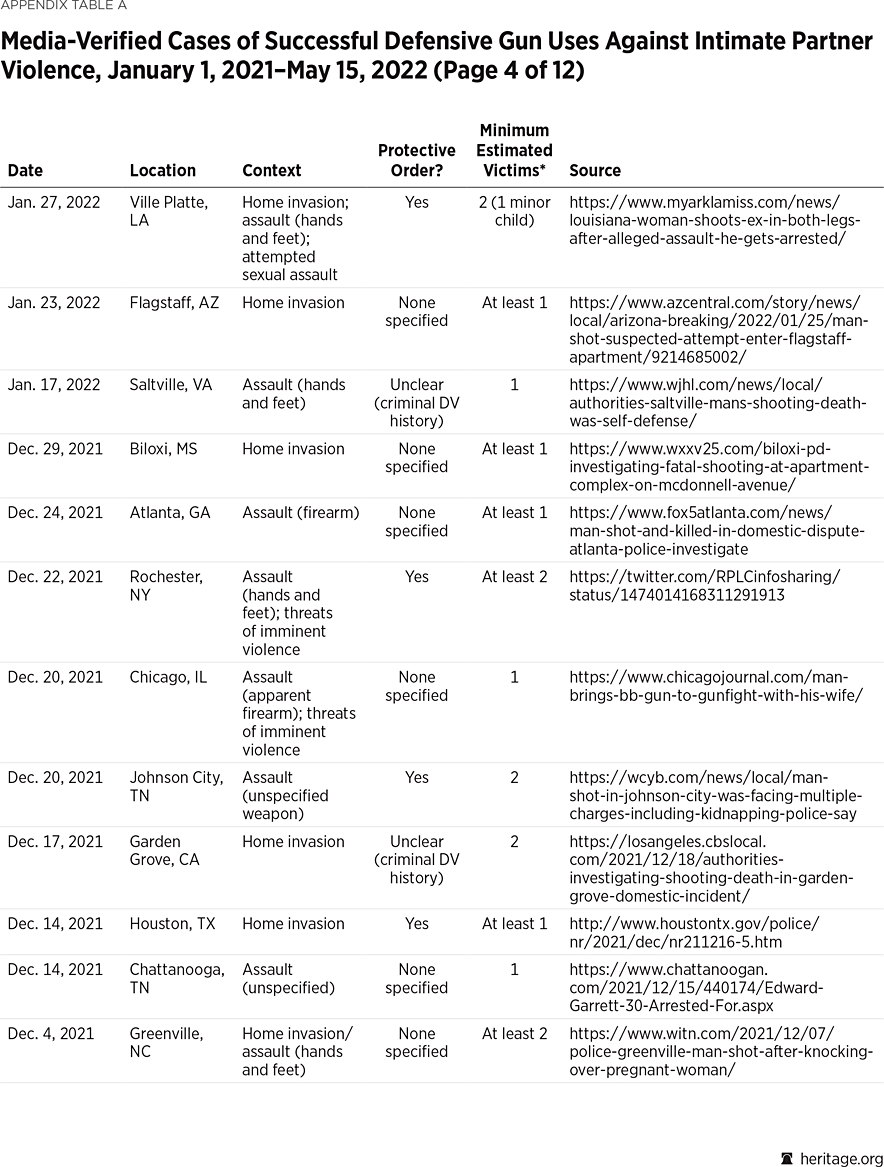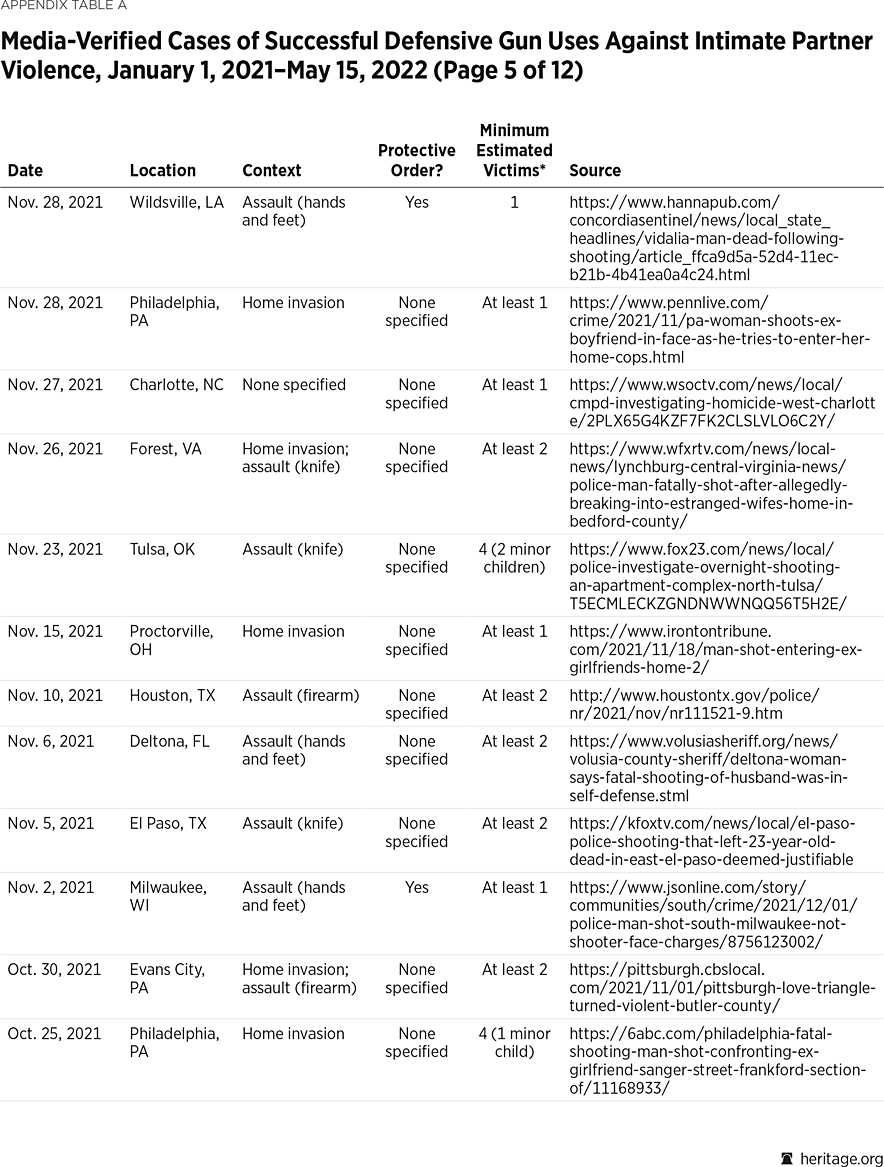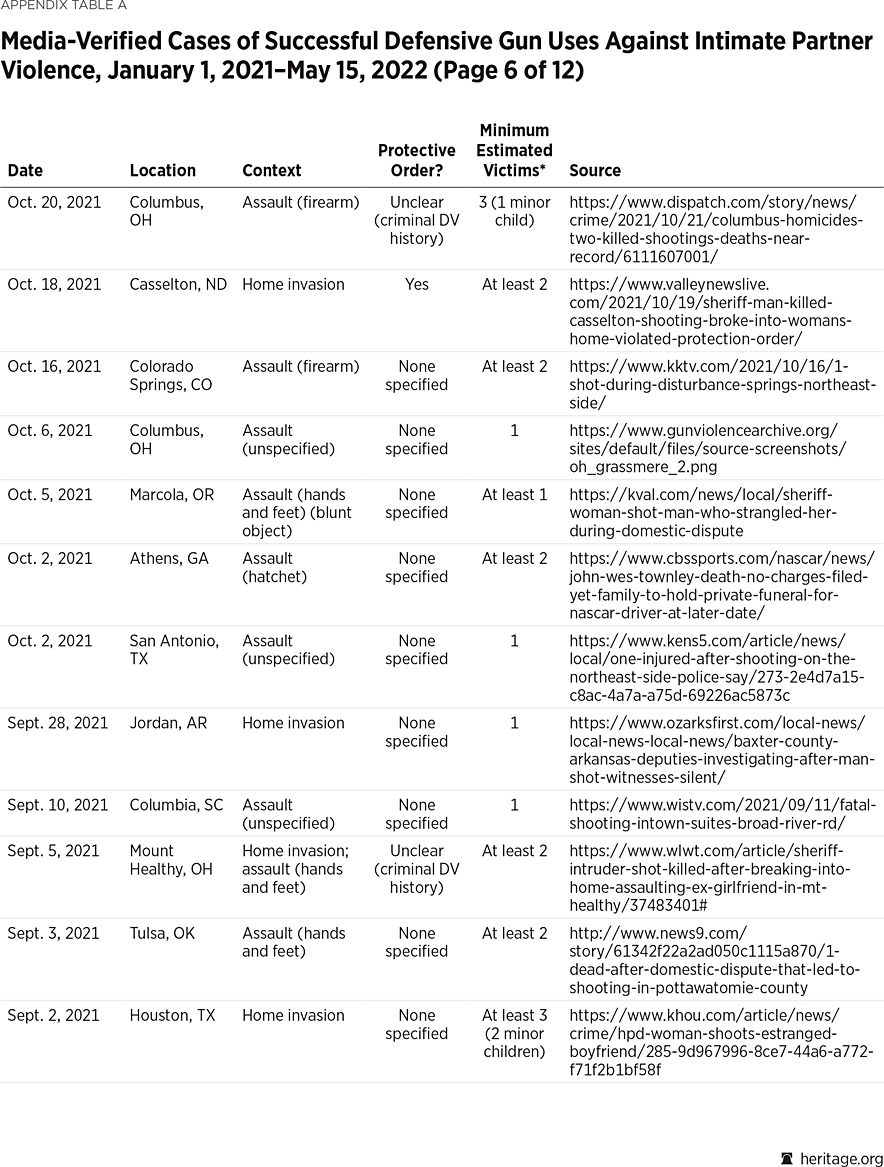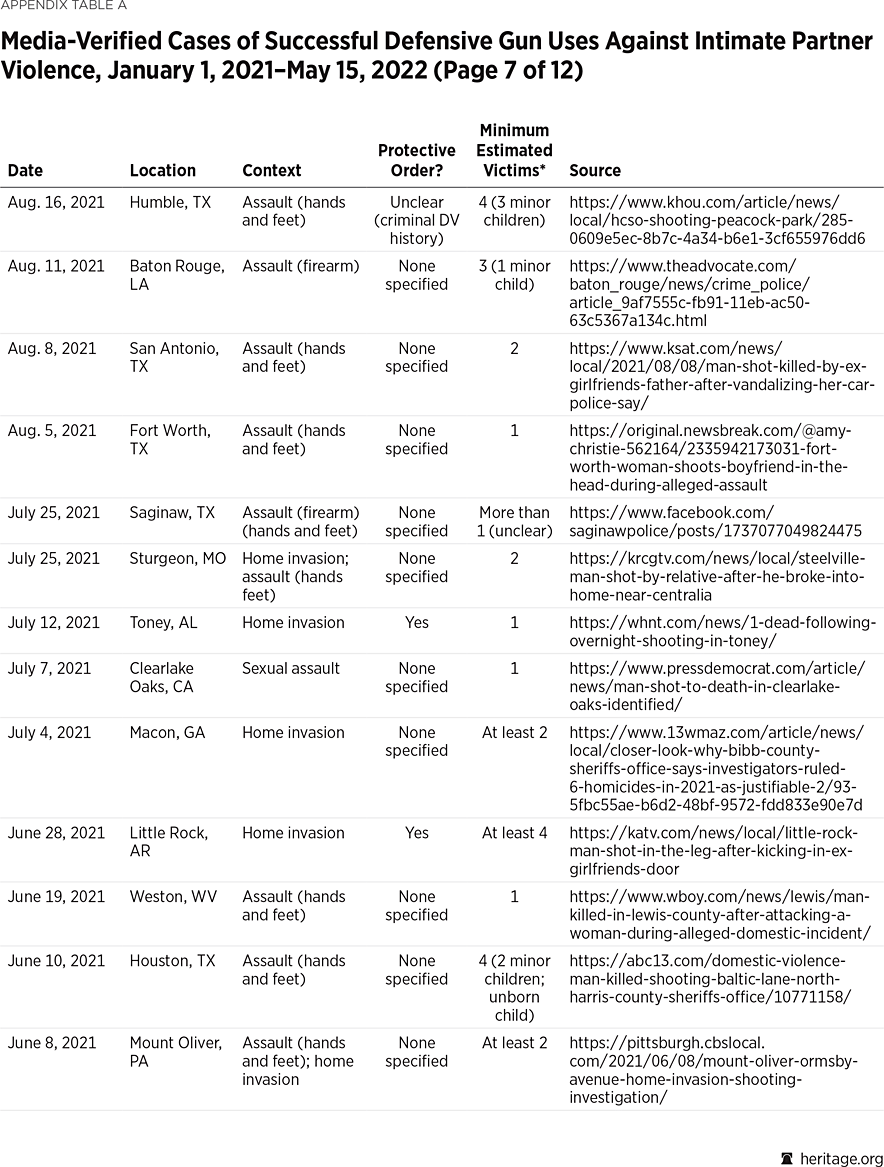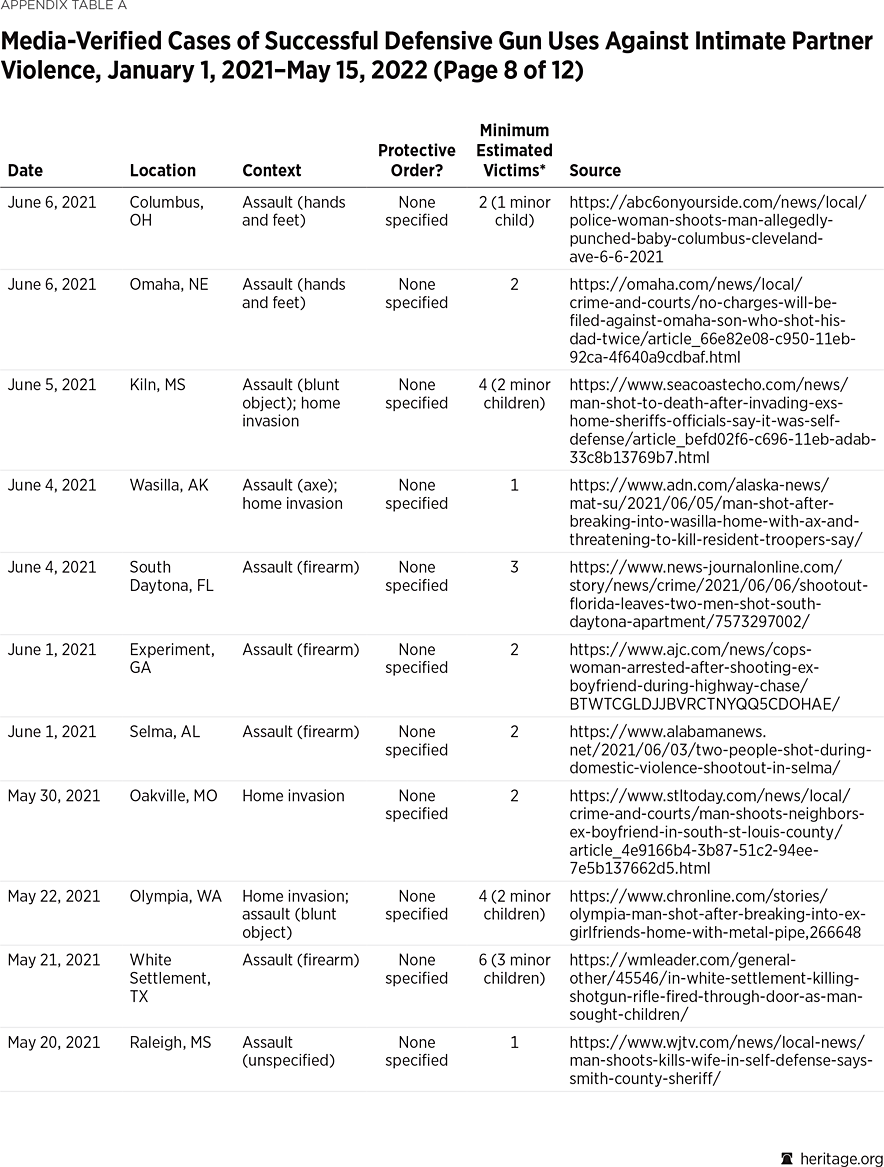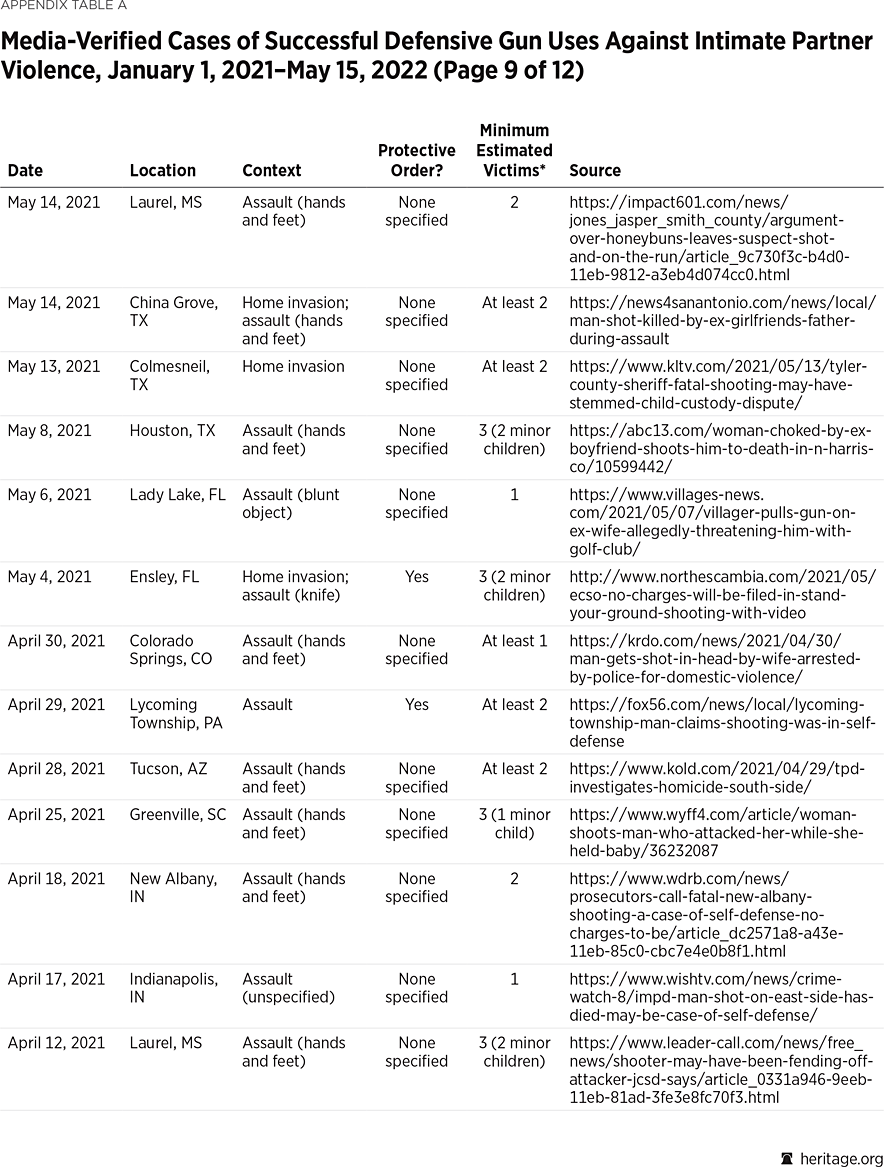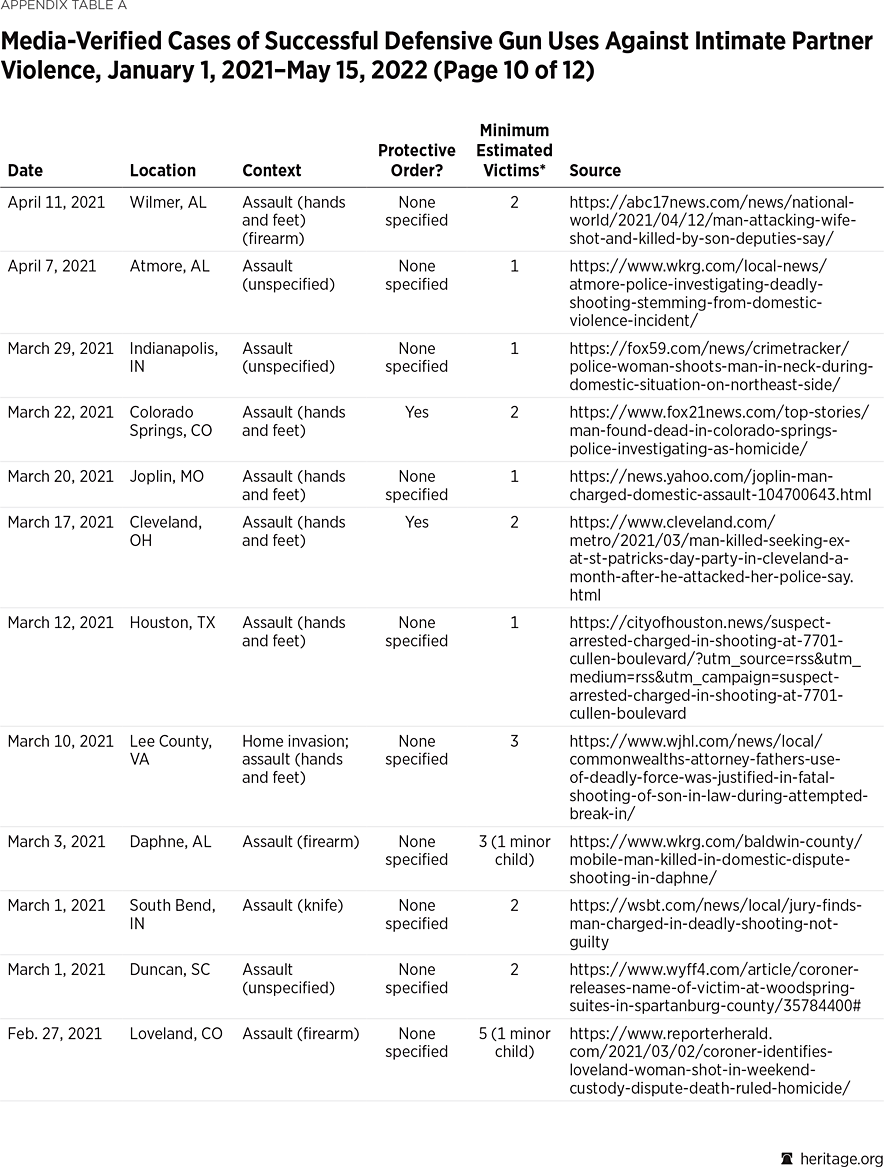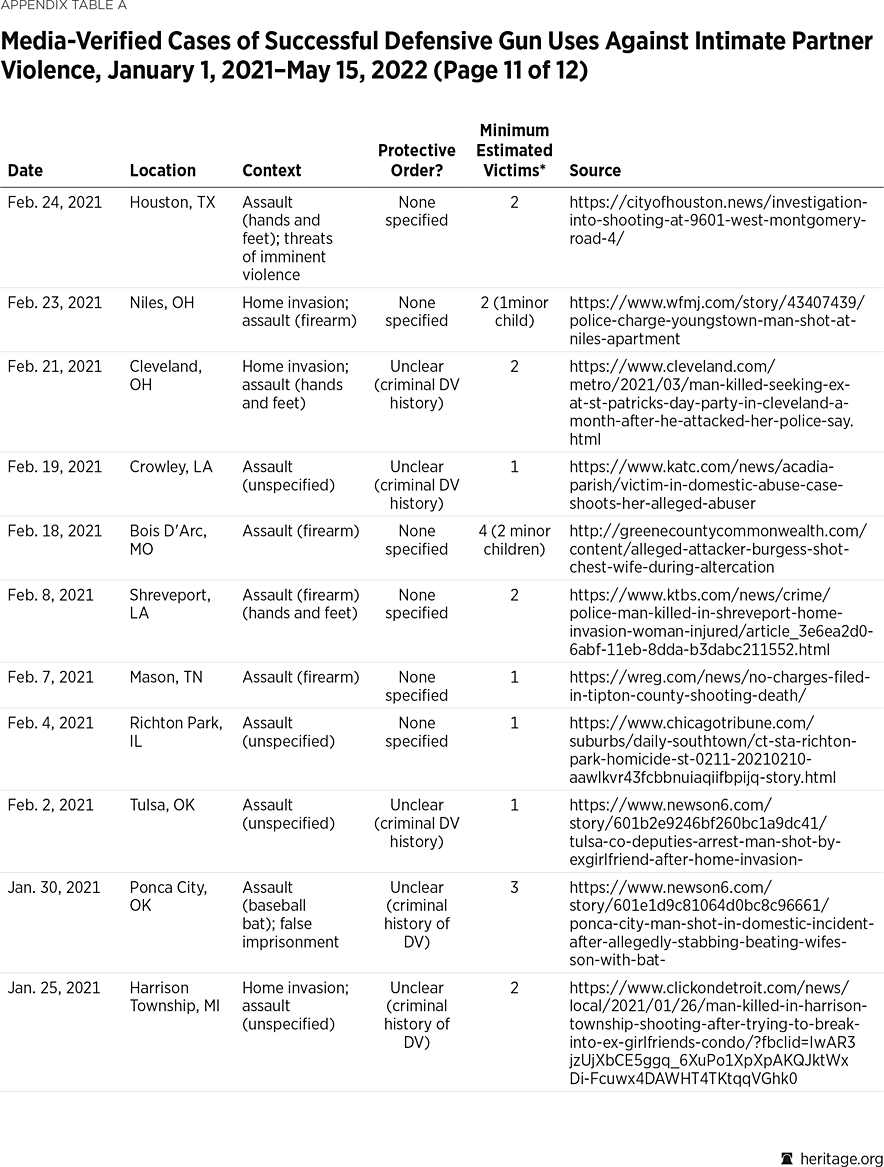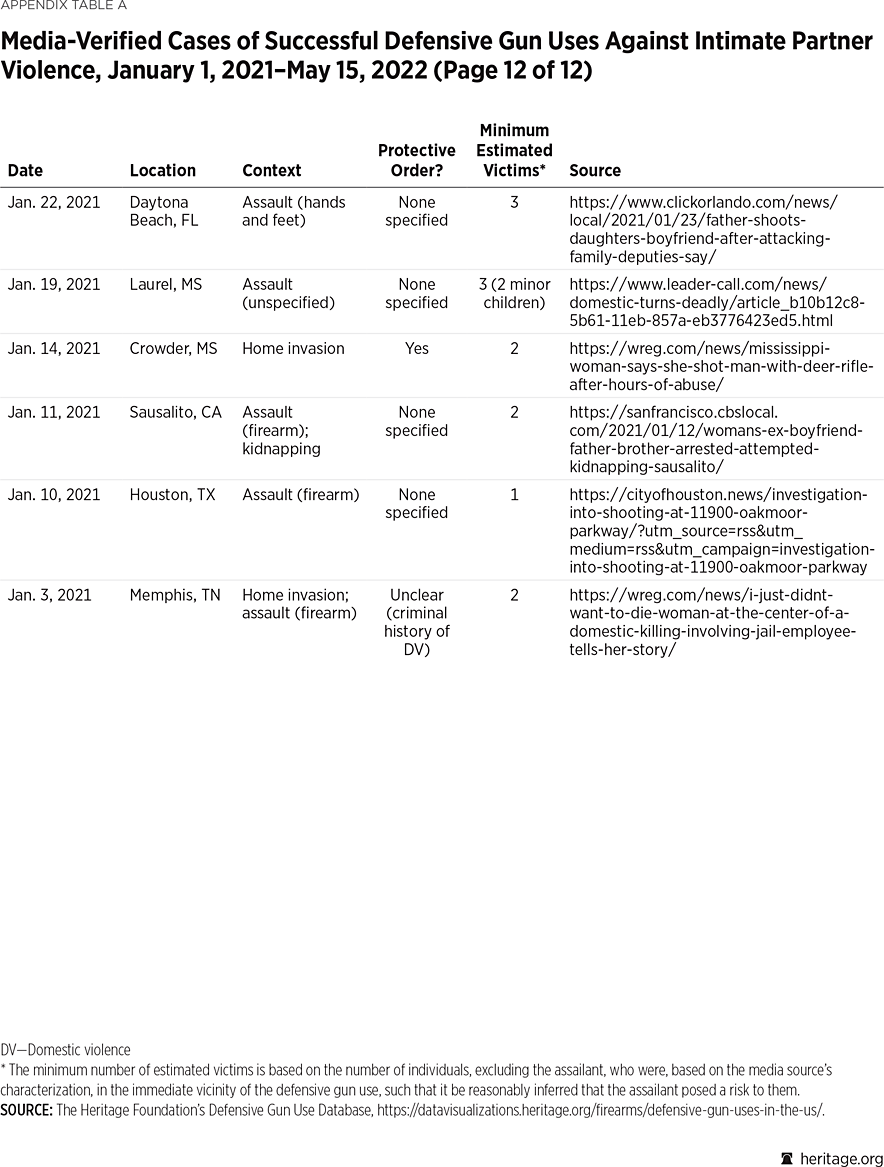Statement submitted to U.S. Senate Subcommittee on the Constitution
Hearing: Stop Gun Violence: The Jackson-Elia Domestic Violence Survivor Protection Act
May 17, 2022
Amy E. Swearer
Legal Fellow, Edwin Meese III Center for Legal and Judicial Studies
The Heritage Foundation
Chairman Blumenthal, Ranking Member Cruz, and distinguished Senators,
My name is Amy Swearer, and I am a Legal Fellow in the Edwin Meese III Center for Legal and Judicial Studies at the Heritage Foundation.REF Among other things, I maintain the Heritage Foundation’s Defensive Gun Use (DGU) Database, which records instances of verified defensive gun uses by law-abiding citizens found in publicly available online media sources. The database categorizes these defensive gun uses into broad contexts, including those that occur in a domestic violence context.
According to our analysis, our database currently includes 137 cases since January 1, 2021, in which a law-abiding citizen successfully used a firearm to protect a victim of intimate partner domestic violence. A summary of these defensive gun uses is attached to this statement as Appendix A. While it is sometimes difficult to discern exact numbers of potential victims protected by a defensive gun use, our assessment is that, at a minimum, these armed civilian interventions shielded 272 innocent people (including 48 minor children and an unborn child) from further injury at the hands of a domestic violence abuser.
Importantly, in every single one of the cases provided below, the abuser evidenced a clear intent to cause death or serious bodily injury, hence justifying the armed civilians use of deadly force. Consider just a few of the cases in Appendix A:
- May 4, 2022: An Elmore, Alabama, woman shot her ex-boyfriend after he attacked her at her home. She then held him at gunpoint until police arrived. Investigators determined that the ex-boyfriend had been stalking the woman for some time and had arrived at the property with a pry bar, handcuffs, binoculars, and an unspecified number of knives. He may also have been videotaping the woman without her consent for several days.REF
- March 23, 2022: A Las Vegas woman called 911 to report that her ex-boyfriend was breaking into her home. While the woman was still on the phone with 911 operators, the ex-boyfriend successfully entered the home through a broken window, but quickly retreated after the woman confronted him with a handgun. Before responding officers could arrive, the ex-boyfriend returned to the home armed with his own gun and put it to the head of the woman’s current boyfriend. The woman fatally shot the ex-boyfriend. Neither the woman, her current boyfriend, nor any of the three school-aged children inside the house at the time were harmed.REF
- February 3, 2022: Just days after a judge granted a Tulsa woman’s protective order against her ex-boyfriend and ordered him to surrender his firearms, the ex-boyfriend showed up to her apartment armed and kicked in her door. Fortunately, the woman’s current boyfriend was present and, armed with his own gun, fatally shot the intruder before he could harm anyone.REF
- May 21, 2021: Police in White Settlement, Texas, said that after a “domestic disturbance” with her a husband, a woman gathered her three children and sought shelter in her brother’s apartment. The woman’s enraged husband arrived at the apartment armed with a shotgun and threatened to shoot down the door if his wife would not let him see his children—a threat he clearly intended to follow through on, as he soon fired a round through the door with his wife and children still inside. The woman’s brother grabbed his AR-15 and fatally shot the husband before he could harm the woman or her children.REF
Our database is limited, and almost certainly undercounts by several orders of magnitude the actual number of times armed civilians successfully defend domestic violence victims from further abuse. First, our database relies solely on publicly accessible online media reports that provide enough information to conclude a particular DGU occurred during an incident of domestic violence involving partners. Often, media reports on DGUs fail to provide enough information for us to make reasonable determinations about the specific context in which the DGU occurred, or about whether the defensive gun user acted in an entirely lawful manner.
There is also good reason to believe that most defensive gun uses (in any context) are either not reported to police or are not considered “newsworthy” enough by local reports to garner a newspaper article.REF Notably, our list almost exclusively involves situations where a gun was not just fired defensively, but where the assailant was injured or killed. It is impossible to know how many women are protected each year during defensive gun uses that are less likely to be reported in a public media source—like, for example, scenarios where the assailant is warded off by a warning shot or by the victim’s mere presentation of a firearm.
At the very least, these verified defensive gun uses underscore the importance of the Second Amendment in protecting victims of domestic violence from their abusers. Far too often, civilian gun possession is framed as contrary to the interests of domestic violence victims. While it is certainly true that armed domestic abusers present a serious threat to their victims, it is also true that armed civilians routinely present a serious threat to would-be abusers.
Additionally, despite common suggestions by some prominent gun control advocates that armed domestic violence victims routinely have their firearms taken and used against them by their abusers, this is not supported by the available evidence. Such tragedies have, of course, occurred. But they are exceedingly rare, especially when compared to the number of successful defensive gun uses. Between our records of cases excluded from the Heritage database and the records available from the Gun Violence Archive—which flags instances of domestic violence involving guns stolen from their owners—we have been able to find only five cases since January 1, 2021, that even remotely fall into this category. In only one of these cases did an abuser overpower his armed victim, take her gun, and immediately use it against her to cause death or serious bodily injury.REF In a second case, the abuser confronted the victim while she was not armed, demanded that she hand over the gun he knew she possessed for protection against him, and then used the gun to fatally shoot her nearly two weeks later.REF In three other cases, a victim’s gun was taken but the abuser either did not attempt to use the gun against the victim or did not successfully use the gun against the victim.REF
Domestic violence is a complex problem that must be addressed on numerous fronts. Without a doubt, victims should be encouraged to report abuse, and their allegations should be taken seriously by law enforcement officers and prosecutors. The cases below provide evidence of another important but often overlooked aspect of domestic violence—the ability of victims to meaningfully defend themselves against abusers who are not deterred by court orders or the threat of legal consequences. Policymakers should ensure that, as they strive to disarm abusers, they do not inadvertently undermine the ability of victims to defend themselves.
